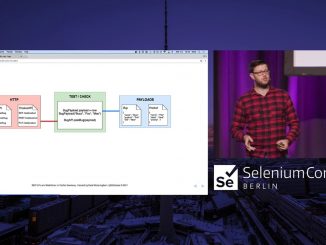Software Testing Videos and Tutorials: Load Testing, Unit Testing, Functional Testing, Performance Testing, Agile Testing, DevOps
This talk demonstrates to participants how they can use HTTP request libraries and WebDriver in harmony. A common pattern that Automator’s fall into is trying to execute every action of a test via the UI, from logging in, creating required data, navigating to that specific data and then running assertions on it before logging out. This can lead to tests that are slow to run and likely to break due to the reliance on many Web elements.
Software testing is today a crucial part of software development, but if it comes to good programming practices a lot of teams have some issues to create sustainable and maintainable tests. Learning the usage of a testing tool is often not enough for writing those. It is also necessary to create a framework which abstracts the different concerns.
Spock is a Groovy-based open source testing and specification framework for Java and Groovy applications that makes writing tests fun again. We can write beautiful and highly expressive tests for Java applications because of its domain-specific language (DSL) and all the power that Groovy provides us.
There are a lot of examples on the web on how to introduce good agile testing and architectural patterns when you are starting a new software development project. In reality, even on newer projects, you are more often working in a less than ideal state.
This presentation shows what it is like working with Behavior Driven Development (BDD) frameworks like JBehave, Cucumber or Concordian. It proposes an effective alternative solution for BDD which is ‘Spock’ – a convenient, lightweight framework, based on the Groovy language.
Gherkin is the language that many Behavior-Driven Development open source software testing tools like Cucumber or Behat use to define test cases. Gherkin is designed to be non-technical and human readable, and collectively describes use cases relating to a software system.
Part of the .NET Foundation, xUnit.net is an open source unit testing tool for the .NET Framework (C#, F#, VB.NET, etc). xUnit.net works with ReSharper, CodeRush, TestDriven.NET and Xamarin.








